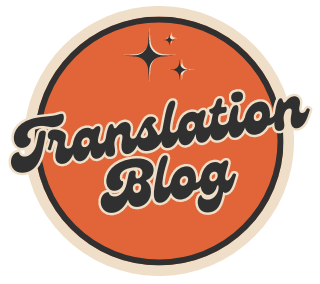Do you target different audiences through your content? If so, you would definitely need to create multilingual material to convey your message effectively. However, one thing that you must be careful about when creating content in different languages is originality. Why? Because it matters a lot in engaging, convincing, and retaining customers. Let’s see why you should pay close attention to originality in your articles, blogs, and product pages’ text. Also, we will discuss how you can stay original when producing content for multiple audiences. So, let’s get started.
Why Is Originality So Important In Multilingual Content?
Originality contributes in different ways to benefit your business. Here is why it matters in multilingual content:
Higher Ranking Chances
Search engines don’t want anyone to rank in different regions by just translating a piece of content. Instead, they require businesses to localize their material in each language to achieve higher positions. So, when you focus on originality in your multilingual content marketing, it positively impacts search engine optimization. As a result, your site gets a better chance to show up in the top results against relevant queries in every targeted region.
Increased Audience Trust
People can tell when something is copied or just translated from others. Nowadays, regular internet users are smart enough to figure out who creates original material. So, even one time if they find you to use translations of existing text, they will lose trust in you. Once your audience starts considering your brand an intellectual thief, they are not going to believe in it anymore. The lost credibility cost nothing except the loss of potential chances of growth.
Stronger Brand Perception
Today, consumers love brands that offer value to them. Creating original content is a great way to make people feel valued. When you take care of the originality of text in every language you write, you actually respect your potential customers. Your dedication to localizing information clearly indicates that you invest time, effort, and resources for your readers. Catering to the informational needs of every targeted country makes your brand look like an industry leader.
Zero Risk Of Legal Penalties
Stealing someone else’s ideas and thoughts is illegal, even if you translate them. If the original creators find you benefiting from the translated version of their work, they might file lawsuits against you. Consequently, you will have to waste time, effort, and resources in legal battles. On the other hand, if you stay original in all languages, there is no risk of facing such problems.
Improved User Engagement
Readers from all across the world like to read content that feels made just for them. Originality brings a sense of exclusivity to your written material. It makes all your audiences perceive that a piece of information has specifically been created for them. This not only boosts their confidence but also strengthens your relationship with them. The value you offer them by writing genuine details using native wording keeps them engaged.
Better Content Personalization
Content personalization has become more important than ever. One of the main personalizing factors is to align the language of the text to the intended readers. When you commit to producing original content, you are better prepared to take care of your wording. In contrast, when you just rely on translations, you don’t even bother to see the words twice. This means that genuine content creation offers more opportunities to personalize written text for each audience.
More Possibility Of Conversions
Driving conversion from readers is one of the trickiest tasks. Originality in content in every language helps you convert users to long-term buyers. How? Because real, clear, and trustworthy messaging appeals more than dull, boring, and rough translations. People are more likely to take action when they see native wording and writing style. That’s why unique multilingual text contributes to increasing your overall conversions.
How To Maintain Originality In Multilingual Content?
Understanding the importance of originality in multilingual content is not enough. You must learn effective practices in this regard.
Here are some effective ones for your convenience:
Learn About Each Audience
People of every country are different. They may not like an idea in the same way as others. Also, their reading preferences might be different from each other. Therefore, before creating content in various languages, don’t forget to learn about the natives. Try to figure out what writing style, word choice, tone, and format they like. This will help you create unique material for each audience, which will drive better results.
Avoid Blind Translations At All
Blind translations mean copying word for word in another language without thinking about meanings. This approach can not only make your content feel awkward but also harm the originality. Remember, every language has its own way of saying things. That’s why it’s better to rewrite an idea in a way that makes sense to each group. So, never rely solely on direct translations.
Hire Native Writers And Editors
Natives know the right use of their language more than anyone else. The way they can present an idea could be way better than one that has little knowledge of a language. Therefore, it’s better to hire writers and editors from the country you’re targeting. This might add an extra cost to content creation, but it ultimately pays off by providing you with more conversions and sales.
Do Plagiarism Tests For Each Version
Even if you create multilingual content carefully, you might still accidentally copy something in any language. That’s why it’s smart to run a plagiarism check for each version you write. In this regard, nothing offers a more accurate assessment than a reliable plagiarism detector capable of evaluating text originality in multiple languages. This helps you identify and remove any plagiarism before publishing.
Cite Sources In Every Language
No matter what language you are creating content in, if you borrow external facts, figures, or statistics, don’t forget to cite sources. Using a well-attributed text is considered legal and ethically correct in nearly all countries. So, this practice not only helps you build trust with different audiences but also keeps you safe from inviting legal problems from any location you target.
Wrapping It Up
We hope that this guide has really helped you comprehend the significance of originality in multilingual content. So, from now on, whenever you produce articles, blogs, or anything in more than one language, don’t forget to stay original. Our above-mentioned suggestions can help you a lot in this regard.

